Brain & Central Nervous System

Brain cancer or tumours is an abnormal growth of cells in the brain or close to the brain. Malignant tumours can grow and spread aggressively to distant parts of the body as well. Tumors that do not spread or invade nearby tissue are called benign. Benign tumors are less harmful as compared to malignant ones, but a benign tumour can cause problems in the brain by pressing on a nearby tissue.
Brain tumors that originate in brain cells are called primary brain tumors. There are about 130 different types of brain tumour. They are generally named after the cells they develop from.Example A tumour of the glial cells is called a glioma. The most common primary brain tumors are gliomas, menin-giomas, pituitary adenomas, vestibular schwannomas, and primitive neuroectodermal tumors (medulloblastomas). The term glioma includes glioblastoma, astrocytomas, oligodendrogliomas, and ependymomas.
Metastatic or secondary brain tumors spread to the brain from other tumors. Symptoms of a brain tumour are usually related to its location rather than its size. Symptoms develop when the tumour destroys or compresses normal brain tissue. Either the tissues around the tumour swell or the tumour interferes with the normal flow of fluid around the brain and spinal cord.
Symptoms to look for:
- Headache
- Seizures
- Speech problems
- Imbalance or difficulty in walking
- Impaired vision or a restricted visual field
Having any of these symptoms does not mean it is cancer, but if one or more of them is noticed for more than two weeks, then a doctor must be seen and an immediate health screening is a must.
Diagnosis of Brain cancer can be done by Physical examination, MRI or CT scan, Biopsy through surgery or Stereotactic brain biopsy. The grade of the tumour is determined by the pathologist on examination Treatment of brain cancer is usually complex. The most widely used treatments are surgery, radiation therapy, and chemotherapy. Many people with brain tumors undergo surgery or a stereotactic brain surgery in which the tumour is removed with the assistance of image guidance, leaving the healthy brain relatively intact. Neuro-endoscopy is another minimally-invasive surgical procedure where the tumour is removed through small holes in the skull, mouth or nose, enabling neurosurgeons to access areas of the brain that cannot be reached with traditional surgery.
Radiation therapy and chemotherapy are other modalities of treatment. A state-of-the-art centre for treatment of brain tumors has specialized neuro-oncologists, neurosurgeons and advanced radiation technology for coordinated treatment and support focused on helping the patient to conquer the disease and to maintain quality of life.
Breast Cancer

Breast Cancer is established as one of the nation’s most formidable enemies in the healthcare landscape. It is one of the most common cancers amongst Indian women; every year as many as 100,000 women develop breast cancer in the country. This high incidence is poised to rise to an even more unmanageable number.
Breast Cancer is a result of multiple factors which includes environmental and lifestyle changes. In a majority of the cases, it is due to anomalies that arise out of the aging process, while in 5-10% of the cases, it is genetically inherited.
Early detection is the best protection against breast cancer. Regular self-examination and a mammography at regular intervals have proven to be most effective in early diagnosis and in achieving better results in treatment and cure. Apollo Multispecialty Hospitals, Kolkata has been a pioneer in introducing comprehensive screening protocols for early detection of breast cancer. A suite of preventive health checks, advanced imaging, mammography and expert diagnosis has been an Apollo hallmark. Recently, Apollo Multispecialty Hospitals, Kolkata aggregated its many years of experience and expertise in this field into the highly specialized offering –
The Apollo Breast Clinic:
As a forerunner in the treatment of breast cancer, Apollo Multispecialty Hospitals, Kolkata has performed over 50,000 breast surgeries, over the past two decades. Apollo represents the amalgamation of the finest talent, latest equipment and deep expertise in combating breast cancer. The team uses the best of surgical procedures, radiation therapy, chemotherapy and hormonal therapy to deliver best-in-class outcomes.
Being diagnosed with breast cancer is a life-changing event. Access to the best doctors and treatment is the most vital step in the battle of good health.
At Apollo Multispecialty Hospitals, Kolkata the teams stand committed, helping patients conquer cancer and live a healthy and happy life.
The Apollo Cancer Team (ACT):
The Apollo Cancer Team (ACT) includes dedicated breast surgeons, Oncoplastic surgeons, medical oncologists, radiologists, psychologists and counsellors. Our Breast Cancer ward includes experienced nurses exclusively for patient’s post operative care; this is complemented by a comprehensive range of advanced facilities for patient care.
Carvical Cancer

Gynaecological Cancers – The Changing Scenario
The past decade has witnessed a major change in diagnosis and early detection of gynaecological cancers. Advancement in technology has helped redefine management strategies.
The common gynaecological cancers are cervical, ovarian, endometrial (uterine body) and cancer of the fallopian tube (occasionally) excluding carcinoma of the female breast.
Gynaecological cancers have increased in India and by 2020, may constitute about 30% of the total cancers among women.
Common Symptoms To Look For:
- Irregular Periods
- Bleeding after sex
- Bleeding after menopause
- Persistent white / watery / foul discharge
Having any of these symptoms does not mean it is cancer, but if one or more of them is noticed for more than two weeks then a doctor must be seen and an immediate health screening is a must.
The cervix (mouth of the uterus) can be examined by the Pap smear test. It is a simple test performed by the gynaecologist to detect early pre-cancer changes in the cervix. Women with suspicious changes are offered colposcopy (visualization of the cervix under magnification) to help identify and biopsy the exact site for possible pre-cancer changes. Identification and treatment at this stage will help prevent cervical cancer that may develop 10 to 20 years later. The Human Papilloma Virus vaccine plays a major role in the reduction of cases of cervical cancer.
Ovarian Cancer has eluded early diagnosis in both developed and developing countries alike. More than two thirds are still detected in Stage III and the mortality is high. A multi modal approach – a family history, ultrasound scan and tumour markers, especially CA 125, will help identify women at risk.
Women at risk of Cancer of the uterine body – endometrial cancer – should be offered a trans-vaginal ultrasound every 6 months after menopause. This will recognize an increase in the endometrial thickness even in women without symptoms. A biopsy can then be performed to confirm the diagnosis.
Modern methods of treating Gynaecological cancers include Surgical, Medical, Radiation procedures or a combination of these, but regular health checks are the best defense against gynaecological cancers.
Head & Neck Cancers

Head and Neck Cancers make up almost 30% of cancers among Indians. The major culprits are chewing tobacco, betel nut, paan, smoking cigarettes and consuming excessive alcohol. Another risk factor is an infection with the HPV which increases the risk of throat cancer.
Common Symptoms Include:
- A sore in the mouth that has not healed for more than 3 weeks
- Persistent change of voice
- Difficulty in chewing and swallowing
- A lump in the neck
- Bleeding, pain or numbness in the nose or mouth
- Difficulty in opening the mouth
- Facial, neck or ear pain
Having any of these symptoms does not mean you have cancer, but if you notice one or more of them for more than two weeks, please see your doctor and go in for an immediate health screening.
Treating Head and Neck cancers requires a multidisciplinary team of doctors (Head & Neck Oncosurgeons, Neurosurgeons, Reconstructive surgeons, Dental surgeons, Radiation oncologists & Medical oncologists) who address all dimensions of treatment, for the best outcome.
At first, ideally, a comprehensive personalized care plan should be drawn up for each individual patient after the cancer is diagnosed. Surgery, radiotherapy, chemotherapy or a combination could be used, depending upon the type, site and size of the tumour. This approach is what the best centres in the world use and it has been scientifically proven to produce the best results. Radiation is delivered using the Novalis Tx system, the fastest in treatment speed, precision and simplicity, to accurately target tumors. In addition, if needed minimally invasive surgery techniques such as Trans Oral Laser Surgery and Trans Oral Robotic Surgery (TORS) using the Da Vinci Robotic surgery system, are used.
Head and Neck Cancer can be prevented and cured if detected early. While treating though, the challenge lies in maintaining a fine balance between complete cancer clearances and making sure that the patient does not lose the ability to speak, swallow and breathe or a gross distortion of facial features. Highly skilled Reconstructive Surgeons use a microsurgery technique that uses miniaturized surgical instruments and a microscope to connect blood vessels in the leg bone (fibula) to blood vessels in the neck. Similarly, surgeons can use skin and muscle from a patient’s thigh, hand or intestine to replace part of the neck, tongue, and throat. The Oncology Team’s approach should ensure not only cure but also the maintenance of appearance and quality of life.
Leukaemia
Treating Childhood Cancers
In India each year, 150 out of every one million children are diagnosed with cancer. Cancers affecting children are of a unique kind.
Leukemia is the cancer of bone marrow and blood. It is the most common childhood cancer and accounts for about 30 % of all cancers in children. Common symptoms are bone and joint pain, fatigue, weakness, pale skin, bleeding or bruising, fever, weigh loss amongst others.
Brain and central nervous system tumors account for about 26% of childhood cancers. Headaches, nausea, vomiting, dizziness, trouble walking or handling objects are common symptoms of these cancers. Neuroblastoma affects infants and young children and starts in the early forms of nerve cells in a developing embryo or fetus. Wilmus tumor (nephroblastoma) starts in one or rarely both kidneys. It is most often found in children between 3 to 4 years of age.
Lymphomas starts in certain cells of the immune system called lymphocytes. They can cause weight loss, fever, sweating, tiredness and swollen lymph nodes under the skin in the neck, armpit, or groin.
Rhabdomyosarcoma starts in cells that normally develop into skeletal muscles. It accounts for about 3% of childhood cancers. Retinoblastoma is a cancer of the eye. It accounts for about 2% of childhood cancers.
Primary bone cancers (cancers that start in the bones) occur most often in older children and teens, but they can develop at any age. They account for about 3% of childhood cancers.
Treatment procedure includes chemotherapy, surgery, radiotherapy or a combination of all.
In seeking treatment for a child diagnosed with cancer, do look for the following aspects while choosing the cancer care hospital:
Multidisciplinary medical team that works together to decide the best treatment option for the child.
Minimally invasive cancer surgery that reduces pain and shortens the child’s stay in the hospital so that the child can return to daily routine soon.
Advanced radiation therapy that ensures minimal trauma due to precise targeting of the cancer.
Advanced pathological analysis of tumour to ensure the right dose of chemotherapy or radiation.
Blood bank standards that are of international quality.
Trained staff who are sensitive to caring for children with cancer and provide support to the family as well.
Lung Cancer
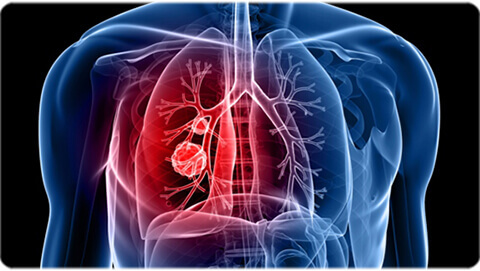
Treating Lung Cancer
The lungs are amongst the hardest working organs in the body. They expand and contract up to 20 times a minute; to supply oxygen which is distributed to tissues all across the body and expel carbon dioxide which is created throughout the body.
Cancer in the lungs is common and people who smoke are at the highest risk of contracting lung cancer. The risk of lung cancer increases with the duration of smoking period and the number of cigarettes smoked. The silver lining though is that if one quits this habit even after several years, one can significantly reduce the chances of developing lung cancer.
- Symptoms Of Lung Cancer That Occur In The Advanced Stage Of The Disease
- A new cough that doesn’t go away
- Changes in a chronic cough or ‘smoker’s cough’
- Coughing blood, even small amounts
- Shortness of breath
- Chest pain
- Wheezing
- Hoarseness
- Unexpected weight loss
- Bone pain
- Headache
Having any of these symptoms does not mean it is cancer, but if one or more of them is noticed for more than two weeks, then a doctor must be seen and an immediate health screening is a must.
Risk factors include smoking, passive smoking, exposure to radon gas, asbestos and a family history of lung cancer. People with an increased risk of lung cancer should take annual CT scans to look for the disease. Also, smokers of 55 years of age or older and even those who used to smoke earlier should check with their doctor about screening for lung cancer.
- In Order To Diagnose Lung Cancer, The Doctor May Recommend:
- Imaging tests: An X-ray image of your lungs may reveal an abnormal mass or nodule. A CT scan can reveal small lesions in your lungs that might not be detected in an X-ray.
- Sputum cytology: Observing the sputum under the microscope can sometimes reveal the presence of lung cancer cells.
- Tissue sample (biopsy): Lung cancer may be treated by surgery which would be either a Wedge resection, to remove a small section of the lung that contains the tumor along with a margin of healthy tissue, or Segmental resection to remove a larger portion of the lung but not the entire lobe or Lobectomy, to remove the entire lobe of one lung or a Pneumonectomy to remove an entire lung.
Chemotherapy is often used to kill cancer cells that may remain after surgery.
Radiation therapy can be directed from outside the body (external beam radiation) or it can be put inside needles, seeds or catheters and placed inside the body near the cancer (Brachytherapy).
Targeted therapies are newer cancer treatments that work by targeting specific abnormalities in cancer cells. Targeted therapy options for treating lung cancer include Bevacizumab, Erlotinib, Crizotinib and others.
Liver Cancer
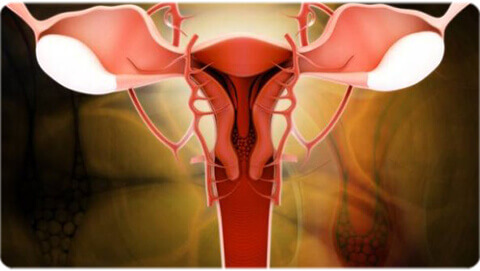
The liver is one of the most vital organs which filters the blood coming from the digestive tract, before circulating it to the rest of the body. It detoxifies chemicals and metabolizes drugs. The liver also synthesizes proteins required for blood clotting and other functions.
The liver can be affected either by primary liver cancer which arises in the liver, or secondary or metastatic cancer, which originates elsewhere in the body. Primary liver cancer tends to occur when the liver is damaged in the form of cirrhosis (a scarring condition of the liver), certain birth defects, alcohol abuse, chronic infection with diseases such as hepatitis B and C, hemochromatosis, obesity and fatty liver disease amongst others.
COMMON SYMPTOMS
- A hard lump on the right side just below the rib cage
- Swollen abdomen and discomfort in the upper abdomen (right side)
- Pain near the right shoulder blade or in the back
- Jaundice
- Easy bruising or bleeding
- Unusual tiredness
- Nausea and vomiting
- Loss of appetite
- Weight loss for no reason
Having any of these symptoms does not mean it is cancer, but if one or more of them is noticed for more than 2 weeks, then a doctor must be seen and an immediate health screening is a must.
DIAGNOSIS
The diagnosis of liver cancer includes physical examination and history, serum tumor marker test, liver function test, CT scan and MRI. Biopsy is done along with laparoscopy to confirm the diagnosis.
TREATMENT
Liver cancer as staged by Barcelona Clinic Liver Cancer (BCLC) staging system is
Stage 0: Very early
Stage A: Early
Stage B: Intermediate
Stage C: Advanced
Stage D: End-Stage
Treatment of stages 0, A and B includes partial hepatectomy, total hepatectomy and liver transplant. The tumour can be ablated using radio frequency ablation, microwave therapy, percutaneous ethanol injection and cryoablation. Treatment of stages C and D includes embolization therapy and is performed by using either transarterial chemo-embolization (TACE), Radio Frequency Ablation (RFA), Transarterial Radioembolization or external beam radiotherapy with high dose focused conformal technology (e.g. cyberknife)methods.
Liver Cancer is completely curable if detected early. Liver cirrhosis and viral hepatitis can be detected early by regular health screenings. An integrated approach of a multidisciplinary team is the best way to conquer liver cancer.
Ovarian Cancer

Ovarian cancer is the second most common type of gynaecologic cancer. The ovaries are composed of three distinct cell types: epithelial cells, germ cells, and stromal cells. Each of these cell types can give rise to different kinds of tumours. 9 out of 10 ovarian tumours originate in the epithelial cells. Epithelial ovarian cancer is the most common, originating in the epithelial cells that cover the surface of the ovaries.
A family history of ovarian cancer is the strongest risk factor for this disease. Women with mutations in the BRCA genes have a particularly increased risk. Some factors- such as having surgery to remove the ovaries, the use of oral contraceptives, and tubal ligation — have been shown to help prevent ovarian cancer.
SYMPTOMS
The four symptoms much more likely to occur in women with ovarian cancer than women in the general population are bloating, pelvic or abdominal pain, difficulty eating or feeling full quickly, and urinary symptoms.
DIAGNOSIS & TREATMENT
The two methods currently available to reduce the risk of ovarian cancer from ever occurring are using oral contraceptives or undergoing risk-reducing (prophylactic) surgery to remove the ovary and fallopian tubes.
DIAGNOSIS
Ovarian cancer is usually diagnosed with a pelvic examination and transvaginal ultrasound. A surgical biopsy of the tissue is used to confirm the diagnosis; additional imaging tests may be performed to determine if the disease has spread.
TREATMENT
The primary treatments for epithelial ovarian cancer are surgery, chemotherapy, and radiation therapy, delivered alone or in combination with another therapy.
The standard treatment for ovarian cancer is surgery — for diagnosis, staging (determining the extent of cancer), and tumour debulking, or cytoreduction — followed by chemotherapy.
For cancers that appear to be confined to the ovary, the use of less invasive techniques to remove the tumour(s) is adopted. These laparoscopic procedures, performed through small incisions made into the abdomen, can be used to biopsy and stage, and also to determine the extent of a cancer. Depending on the size and location of the tumour, laparoscopy also can be used to remove cancerous tissue, meaning that a more extensive open surgery can be avoided. Such surgical approaches result in shorter hospital stays, a quicker recovery, and lower costs, and are as effective as conventional surgery. For selected younger patients, fertility preservation (retaining a normal ovary and the uterus) can be considered.
Early-stage ovarian cancer with minimally invasive surgery is equally effective and accurate as staging during open surgery. Our surgeons use the robotic da Vinci® Surgical System.
Chemotherapy
To destroy any tumour cells that remain after surgery, chemotherapy is recommended for the majority of women with ovarian cancer. This usually includes a combination of systemic and regional chemotherapy.
Radiation Therapy
Radiation therapy may be given over a period of several weeks. It is rarely used as a primary treatment for ovarian cancer, but is sometimes considered after the removal of a recurrent tumour or in the treatment of a recurrence.
Pediatric Malignancies
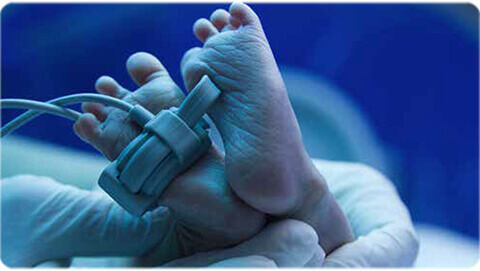
Every year, 150 out of every million children in India get diagnosed with cancer. Leukaemia and lymphoma represent the most frequent Pediatric malignancies followed by brain tumours. Bone tumours, neuroblastoma, nephroblastoma are less frequent. Brain tumours are the most common type of solid tumour in children.
Pediatric Leukaemia is the most common form of childhood cancer, and accounts for about 30% of all cancers that affect children and young adults. The number of boys presenting to cancer centres in India are far more than girls and this represents our social bias rather than a true male preponderance.
In the last three decades, treatment for childhood cancers has improved in leaps and strides with an overall survival rate of above 80%. This progress is mostly due to advances in diagnostics, supportive care, multimodal chemotherapy treatment protocols, surgical clearance with precision and high technology radiotherapy delivery.
SYMPTOMS
Leukaemias result from the uncontrolled proliferation of white cells that may be lymphoid or myeloid cell groups. Depending on the type of cell groups involved they are called Acute Lymphoblastic Leukaemia (ALL) the most common type present in 85% of children and Acute Myeloid Leukaemia (AML) that accounts for approximately 15% of childhood leukaemia.
Children may present with fever, bone pain and reddish skin spots or bleeding from nose and mouth. On examination, most of them have an enlarged liver, spleen or lymph nodes. Bone pain could be indicated by a young child limping or refusing to walk. Signs of bleeding include easy bruising or small spots of blood called petechiae under the skin. Prolonged fever with no apparent cause can also be a presenting symptom. Persistent headache, vomiting, inability to walk or visual symptoms could be features of a brain tumour. A painless bony swelling that has come to light after a trivial injury is the most common presenting feature of a bone tumour. A white eye reflex is an early sign of an eye cancer called retinoblastoma.
TREATMENT
Apollo Multispecialty Hospitals is a pioneer in cancer treatment and has dedicated Pediatric Oncology units with clinical expertise to manage all types of childhood cancers. Treatment in the form of chemotherapy, surgery, radiotherapy or in various combinations is used depending upon the cancer type for maximum benefit after discussion in a multidisciplinary team meeting.
Pediatric surgeons can offer minimally invasive surgery that reduces pain after the procedure, shortens the child’s stay in the hospital and speeds recovery so the child can return to his or her usual daily activities as early as possible. Radiotherapy is delivered with precision and is planned carefully by a team of physicists and radiation oncologists. Small children are sedated by senior anaesthetists to help deliver care with minimum psychological trauma to a child.
At Apollo, our Pediatric neurosurgical team has tremendous amount of clinical experience and endeavours to achieve complete surgical removal of the tumour without major secondary neurologic side effects.
Our pathologists collaborate with the clinical teams and analyse tumour tissues using the latest technology available including flow cytometry and PCR based molecular assays. This approach ensures that children and young adults who do not need high doses of chemotherapy or radiation are spared the side effects of treatment whilst also making sure that patients with more aggressive cancers receive the most effective form of therapy available. Blood bank standards are of international quality and all patients receive filtered blood that has been tested using nucleic acid methods to avoid blood borne viral infections.
Our team of compassionate and competent nurses and paramedical staff ensure that the child and family receive safe and holistic care. Our patient support group is actively involved in counselling families to help them through periods of emotional crisis. Long-term follow up is part of the care to ensure that there are no late side effects of therapy in growing children.
Prostate Cancer
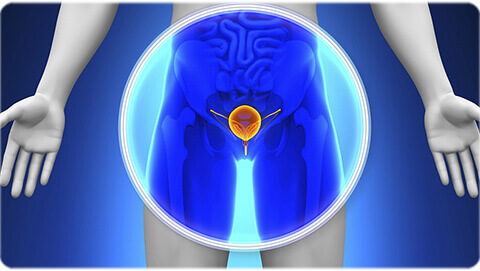
Confronting Prostate Cancer
Prostate cancer is one of the most common types of cancers in men. It usually affects men in their 60s, but is now progressively found in men of a lower age group as well. The common problems arising in this gland include benign (non-cancerous) enlargement, or cancer of the prostate. The risk factors include older age, family history and obesity.
Prostate cancer grows slowly and initially remains confined to the organ. However, in certain cases, the growth is rapid and can spread quickly to other organs. Early detection allows patients to choose from a range of treatment options, with excellent outcomes. Treating prostate cancer requires a team of experts from Medical, Radiation, Uro-Oncology who are aligned to follow protocols of international standards.
- Symptoms To Look For:
- Trouble urinating
- Decreased force in the stream of urine
- Blood in semen
- Discomfort in the pelvic area
- Bone pain
- Erectile dysfunction
Having any of these symptoms does not mean it is cancer, but if one or more of them are noticed for more than two weeks then a doctor must be seen, and an immediate health screening is a must.
In many cases, prostate cancer causes no symptoms till it is advanced. So periodic checks with Digital rectal exam (DRE) and the Prostate-specific antigen (PSA) test are recommended. Elevated PSA levels can be an indication of cancer, infection, inflammation or non cancerous enlargement. Transrectal Ultrasound is done for further diagnosis. The biopsied tissues are examined to evaluate the grade of prostate cancer by Gleason score. Bone scan, CT, MRI or PET CT followed with Biopsy is done to confirm the diagnosis. Men diagnosed with early stage prostate cancer may not require treatment right away. Only active surveillance is required in a few cases.
The treatment options include surgery (radical prostatectomy) or radiation therapy. Radical Prostatectomy for prostate cancer involves removing the prostate gland, some surrounding tissue and a few lymph nodes. The da Vinci Robotic Surgery System is used for surgery in some of the world’s best cancer care centres. Robotic prostatectomy allows the surgeon to make more precise movements with surgical tools as compared to traditional open or minimally invasive surgery.
Radiation therapy can be delivered either by a radiation system like Novalis Tx system, the fastest in treatment speed, precision and simplicity, to accurately target tumors, or by Brachytherapy which involves placing many rice- sized radioactive seeds in the prostate tissue, delivering a low dose of radiation over a longer period of time. A few patients additionally require Hormone therapy, either for a short or long course. A holistic Oncology team approach is the best way to fight prostate cancer.
Thyroid Cancer
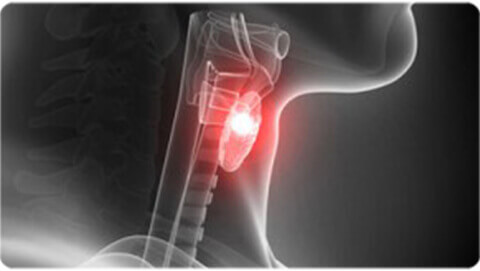
The thyroid is a butterfly shaped gland at the base of the throat, near the windpipe. It produces hormones that help control heart rate, blood pressure, body temperature and weight. There are four types of thyroid cancer – papillary, follicular, medullary and anaplastic thyroid cancer.
Papillary is the most common while anaplastic is the most aggressive and difficult to cure. Other types of thyroid cancers are usually curable if detected early. Occurrence of the cancer is more common in women then amoung men.
- The most common symptom of thyroid cancer is a neck lump or nodule. If the tumour is large, it may cause other symptoms which would include:
- Neck or facial pain
- Shortness of breath
- Difficulty in swallowing
- Cough unrelated to cold
- Hoarseness or voice change
Having any of these symptoms does not mean it is cancer, but if one or more of them is noticed for more than two weeks, then a doctor must be seen and an immediate health screening is a must.
Thyroid cancer is diagnosed by a physical examination of the neck for nodules, thyroid gland function test, blood calcitonin and calcium levels in some cases.
Ultrasound done by an expert sonologist is the investigation of choice. It helps to characterize the nodule (benign or malignant). It can also be used to target a biopsy (FNAC). Ultrasound is used in the follow–up of benign nodules as well. It helps to confirm the diagnosis and plan the treatment.
Molecular testing (gene expression classification) can also be performed to confirm the diagnosis before surgery. Different types of imaging techniques like X-ray, CT scan, MRI and PET scan can also be performed for accurate diagnosis.
The thyroid tumour is staged in order to develop the most effective treatment plan. The two types of surgeries which can be performed are Hemi-thyroidectomy and Total-thyroidectomy. Surgery may be followed by systemic radioactive iodine therapy to destroy cancerous thyroid tissue which is not surgically removed. External radiation or external-beam therapy can also be used. Chemotherapy plays a very little role in thyroid cancer except for very aggressive cancers such as anaplastic thyroid cancer.
An integrated approach with a multidisciplinary team of Onco Surgeons, Radiation Oncologists & Medical Oncologists exponentially increases the chances of a positive outcome.



